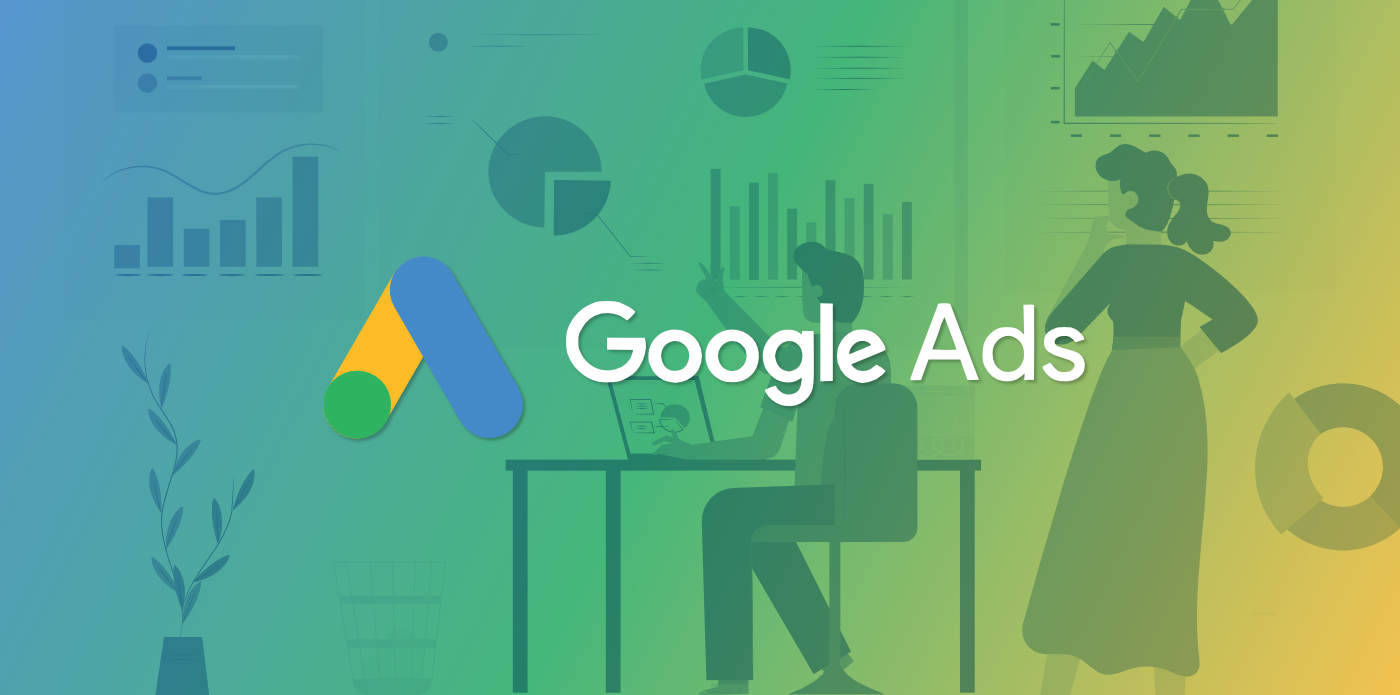You’ve released the campaigns on Google Ads, and the customers are slowly coming. But how can you be sure that the performance is good enough? By tracking the right metrics, of course.
Releasing an ad campaign requires a lot of preparation. Keyword research, campaign naming, creating ad groups, writing copy for the ads, getting the right visuals… it’s a lot of hard work. Once you have released the ads and the first customers slowly start coming to your website, online or offline shop, it looks like everything is moving on according to plan.
But how will you know that this is the best you can do? To be really successful, ad campaigns require constant optimization, and if you have a lot of active campaigns and ad groups, it’s not that easy to track performance or optimize. So, let’s take a look at which Google Ads (former AdWords) metrics you should be looking into to make sure that your ads are delivering their maximum.
But first, let’s take a look at all the ad types that Google Ads has to offer. Through this platform you can place 5 types of ads: Search Ads, Display Ads, Shopping Ads, YouTube Ads, and recently introduced Discovery Ads. Most advertisers focus on Search and Display, so this story will be about the metrics that closely define these two ad types.
Basic ads metrics show… not that much
Let’s start with the basic ones. Impressions shows the number of times your ads have been displayed on web pages or Google Search Result Pages to prospective customers, and obviously the higher the number is, the higher the probability that somebody will actually engage with your ad. Unfortunately, the precision of this metric in the Google Display Network (GDN) is not as high as we would like it to be, as it shows only how many times the ad has been loaded on the webpage, which doesn’t mean that somebody has actually seen it.
With a significant portion of web traffic being generated by bots, rather than people, it is safe to say that this metric is merely an indicator of the fact that the campaigns are running. For any other conclusion, you need to look deeper into the other data that the Google Ads system is offering you.
The number of Clicks, or customers actually engaging with your ads, is definitely a core metric, as it shows the basic efficiency of your ads. But in order for you to understand the impact of performing ads on your business's bottom line, you need to look further than just a sheer number of click-throughs. In the time of inflated webpage impressions and bot click farms, it is important to keep a close look not only at the number of clicks but their reflection on the rest of the customer journey.
Costs is without a doubt one of the most important metrics since you have to act responsibly with the budget you have been assigned with. Spending the right amount of money on the right ads served to the right people is the “Holy Grail” of online advertising, so you need to point your attention to not only the amount of money spent but also how this is spent. Now, let’s take a look at some of the metrics derived from Impressions, Clicks, and Costs.
Compound metrics can show you a slightly wider picture
Once you have reviewed the basic metrics and spotted no issues, you can take a look at the ones derived from them, such as Click Through Rate or CTR. Based on the ratio between the number of impressions and the number of clicks, CTR shows the efficiency of campaigns. Many factors can affect your CTR levels, but as a reference for you the average CTR for search ads is 1.91% and for display ads, it is 0.35%, according to the benchmark research done by HubSpot.
You can evaluate CTR by Campaign and by Ad Group, to be able to understand the nuances between different user segments and ad types, and steer the campaigns and the budgets in the right direction. This level of granularity will allow you to optimize your budget investments by identifying and promoting the ad groups and campaigns that perform better than others.
Maybe the primary metric in the eyes of many marketers is the average Cost-per-Click or CPC. Even though it displays the price you pay for every customer interacting with your ad and coming to your website or online store, this is more an indicator of your ability to hit the right target audience rather than a compound metric that shows the success of your advertising campaigns.
Also, the CPC values largely depend on the competition in your space, so if you are competing for high-value keywords with a competitor with a budget larger than yours, this may become quite a struggle, with a high price tag. There is no real answer to the question “what is a good CPC value” since it can range from just a couple of cents to dozens or even hundreds of dollars/euros in highly competitive industries.
Only by looking at the CPC value in context with other metrics, you can come to a valid conclusion on the success of your campaigns and how you can improve it further. The same goes for Cost-per-Mille (CPM), a metric that shows the cost of 1000 ad impressions. If you’re struggling for brand visibility and/or market presence, you might be actually more interested in CPM values, allowing you to get more people’s eyes on your ads. Of course, visibility without action means little, so you need to keep an eye on CTR and CPC together with this.
How well are your ads really performing?
All of these were just an introduction to probably the most important metric – Conversions. For an online shop or any other company whose business is completely set online, this is relatively easy – you set the purchase completion page as the goal in Google Ads, and once the customer that clicked on the ad reaches this page, you have a (successful) conversion. Unfortunately, this only sounds that simple, and in reality, for most companies, this is a really difficult 1000-pieces puzzle. But the fact that it is heavy doesn’t mean that you should give up on tracking conversions.
Only by establishing a clear connection between the investment into ads and the return it produces in your business you can really evaluate the positive effects your campaigns have on the company’s bottom line. In all other cases, you’re basically stumbling in the dark, with an occasional lucky break. Setting the conversions properly in Google Ads, even for events that are not the ultimate transaction, such as newsletter subscriptions or eBook downloads, is important for establishing the next important metric, which is Cost per Conversion (or Cost per Acquisition in some cases).
Knowing as much detail as possible about the connection between the advertising costs and the company’s revenue is the key prerequisite for establishing the “ultimate metric” – Return on Ad Spend or more popularly ROAS. Many business decision-makers evaluate the efficiency of marketing by looking at the ROAS, or basically the amount of revenue the campaigns have brought to the company. If you’re a small hair salon in a small town or a local pet food online store, establishing this is not so complicated. But if you’re a multinational corporation, with millions of dollars spent on advertising budgets, this can easily become an unsolvable equation. You need to start somewhere, and tracking all the previous metrics properly might not show you the full picture, but is an important step towards it.
How do you rank in comparison to your competitors?
As mentioned above, your competition sets the game in many aspects, primarily through CPC levels, but in many other areas. The first indicator of how your ads stand in comparison with the ones from your rivals is the Impression Share. This metric, available for Search and Display Ads and Shopping campaigns, shows how many times your ads have shown out of the complete opportunities for their display throughout the Google Ads ecosystem. There are two primary reasons why your ads won’t show before the competitor ones: the first is your Ad Rank in Google Ads, and the other one is budget. Improving the rank for your ads is a more complex topic, so we won’t cover it here, but tracking ‘Lost Impression Share Due to Budget’ might give you an indicator of which (ad) battles you can win with your existing (or slightly improved) budget, and which ones will be won by the competition.
And finally, there is the famous Quality Score. It applies only to Search Ads, and goes on a scale of 1 to 10, calculated in relation to ad relevance, based on CTR, and the customer experience on the landing page (established by user behavior metrics such as bounce rate on this particular page). The Quality Score is a complex indicator that affects many aspects of your ads, for example, the Impression Share mentioned above, and refers to the overall quality of your ads and their potential effects. If your score is low, you need to work harder on the ad copy, visuals, targeting, and many other aspects of your ads. And with this we’re back to the very start – the only way to improve your campaign results is to regularly track the most relevant metrics and continuously optimize all aspects of your ads, based on the feedback coming from those metrics.
Of course, as Google Ads is just one of the many online advertising tools used by companies of all sizes, tracking your overall digital advertising performance can be an issue. Adverity offers an advanced analytics platform that combines all of these metrics through an automated data connector into a centralized view of all your digital advertising results. On top of that, the platform has an AI-powered layer that analyzes all of your data and serves recommendations on how to improve performance and further fuel business growth through successful ad campaigns.














